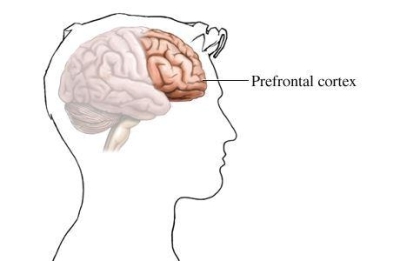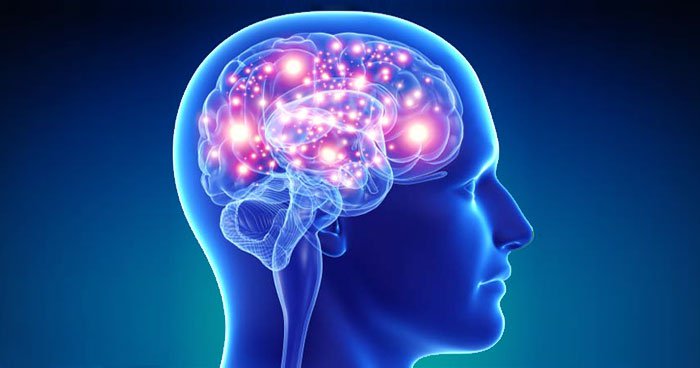This article addresses a few areas of the Brain and Nervous System and compares it to the Decision Making Design and other similar naming conventions of the computer. It references the Pre-Frontal Coretex, the Hypothalamus, and the Autonomous Nervous System, working with the Memory on Decision Making, Planning, and Controlled or Uncontrolled Movements and Reactions.
Prefrontal Cortex, aka. Cerebral Cortex in the frontal lobe. The basic activity of this brain region is considered to be orchestration of thoughts and actions in accordance with internal goals. It is responsible for decision making, perception, planning, prediction, and forming expectations. And is stated by GIKI-Pedia to not be the part that evokes movements, a contradiction to idea that the Prefrontal Cortex is responsible for actions – it does say it requires an update. I call the “Pre-Frontal Cortex” a compiler of information where it’s sends information to the part of the brain that controls Decision Making and Actions. It processes thoughts and tells other parts of your body what to say, how to act, and when to move. It works with sensors and invokes feelings and emotions.
What is the computer’s counterpart? Is it the Core of a “text” based system without the “t”? If you take the word “Coretex” and break it down, as we’ve been taught to do, we find Core-Tex, and if we add a “T” is becomes CORE TEXT. Our computers do make decisions and predictions based on Text, but even more, with a visual component, another area of the brain, most likely in the Frontal Lobe. In computers, decisions are made based on the programming, just like human decisions. Whatever the scenario or situation, we have an internal mechanism and process we use to make decisions and determine outcomes or REACTIONS and it is based on 1) The Past; 2) The Evidence in support of the decision, 3) The information that helps us predict the outcome, but we’re not always 100% correct or responding as we should. A computer is always 100% correct if programmers already know the correct answer, so there must be a way for the human brain to become 100% correct, by running or writing predetermined scenarios in another life, removing the differentiation of biological traits and environmental factors, if necessary. A computer simulation could capture an environments factors, run a scenario prior to sending brain signals or “thoughts” and be able to predict a set of possible outcomes.
The Pre-Frontal “Coretex” is the core of our being. Without thoughts, we are idle, we are brain dead, there is no purpose to the humans existence. A new term called “Free Will” is what allows for our decision making, if its present. Some don’t have it, some shouldn’t have it, and some have it and don’t even realize it.
Researches Miller and Cohen in an Annual Review of Neuroscience claim that, “depending on their target of influence, representations in the Pre-Frontal Cortex can function variously as attentional templates, rules, or goals by providing top-down bias signals to other parts of the brain that guide the flow of activity along the pathways needed to perform a task.” First, I don’t know what an “Attentional Template” is, other than to call it a blueprint for drawing your attention to something or someone and making decisions based on bias (or pre-existing feelings and knowledge) and your ability to influence the outcome; or the decision in the inner or internal self that it’s worth pursuing or not pursuing or taking action; aka. Awareness and Action.
Do you make your decisions based on “Text?” It’s probably not the only mechanism in use. Your brain can’t make informed decisions if it’s unaware of certain things or it can, but information is withheld, forcing decisions and actions with or without ownership or cognitive understanding of what the person is doing or getting ready to do. If you speak something without your own awareness, such as talking in your sleep or speaking about things without a foundation, then its easy to conclude the information must be coming from an External Source.
Computers often make decisions from External Sources and without a Virus Scanner, and possibly a “Firewall” it can become infected; just like the brain. If the “Firing System” of neurons is off, then so are certain thoughts and abilities. A comparison of Neuron Firing and the “abdominal region” has not yet been compared to the “Firewall,” but my guess is that a correlation can be made regarding “gut” reactions made by the abdominal walls. — This and “NUCLEAR REACTIONS” requires research.
Have you ever wondered why thoughts randomly pop in your head from your memory, sparked by an object in your external environment, such as a toy Hypopottumus (aka. Hypothalumus – the part of the brain that manages hormones) and then start singing the Hokie Pokie? “You put your right foot in, you put your right foot out, you do the hokie pokie and you turn yourself around; that’s what it’s all about.” I am reminded of an old colleague who loved the “Virginia Hoakies” college football team. I began to think of the term “Poke” as used in facebook, reminding myself that I hated the term because it was annoying and began thinking of how we do things with an unaware state of mind; such as poke or scratch our face or other areas, such as move our legs when sitting at a desk; without even being aware of reason and purpose, without knowing it’s being personally controlled. Oddly enough, I scratched my cheek as I pondered. This thought process or pattern is 1) Being sparked by the characteristics of an object; 2) A child song reference guiding movements; 3) Referencing an feature of a Social Media system; and 4) Relating it to past person(s), object(s), or event(s). I didn’t tell you every thought in the process, but it also included a reference to an Uncle, a statement made at the zoo (a lasting childhood memory); a joke, and a toy.
I don’t know what on Earth the Hypothalamus has to do with a Hippopotamus, other than the variation of the Root Word “Hype or Hip” just like Hypocondriac, and Hypertext. A word review would be beneficial to look at Hypo vs. Hyper; as well “Hypothesis.” It would make more sense to say PREDICTION ANALYSIS and Decision Making would make more sense coming from the HYPO-Thalamus; or it’s just the LAMUSt word in the world. The Hypothalamus contains controls for the Central Nervous System; referenced here, it’s called the Autonomous Nerve System. It’s said to be the part that manages and regulates internal organs without what I call cognitive awareness or “conscious recognition.” I suppose this part manages blood pressure and brain responses when someone is “on your nerves.”
I once had a theory that Toys could control people; and it’s a proven theory. Some cannot let go of their toys; just as some cannot let go of their past memories. Some form major ATTACHMENTS to these items, and some forget them until something sparks or FIRES their memory, sending them on a “neuro-pathway” to decipher, remember, make decisions, and determine purpose and value. Some stay attached forever, some form Attachment Disorders, and some take a detached approach to life and situations. Some just dismiss this stuff entirely, but I know, some toys and people attached to them, get on my “NERVES” and some offer a great deal of stimulation for all ages of humans.
People, Places, and Things invoke feelings, based upon senses, actions, and memories – The Emotions that arise from events, memories, new experiences take place in what part of the brain?

